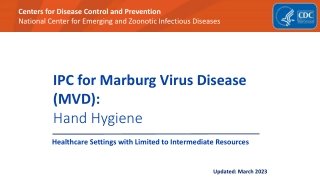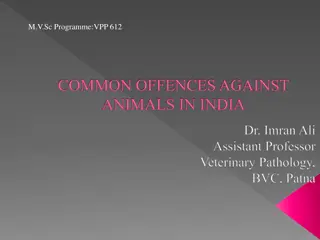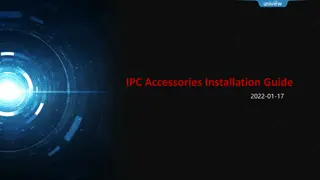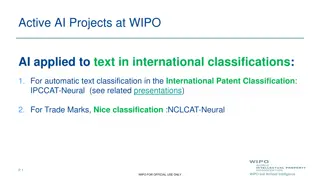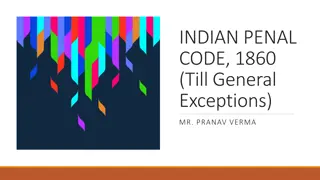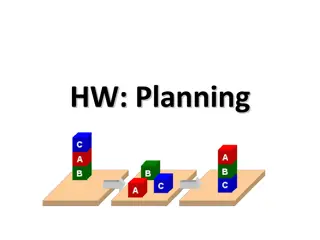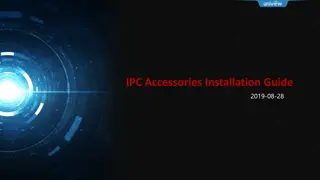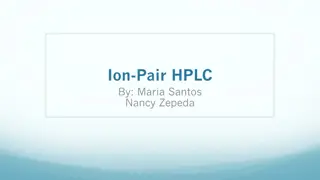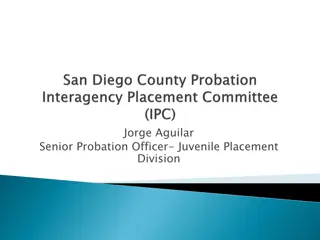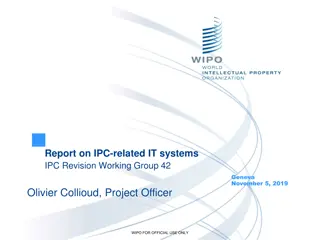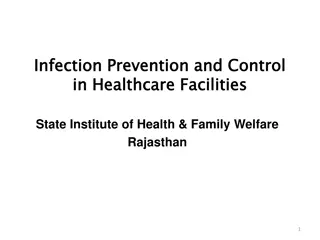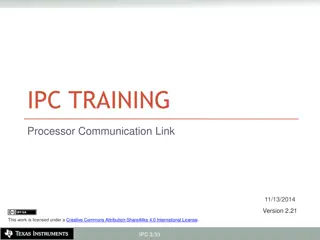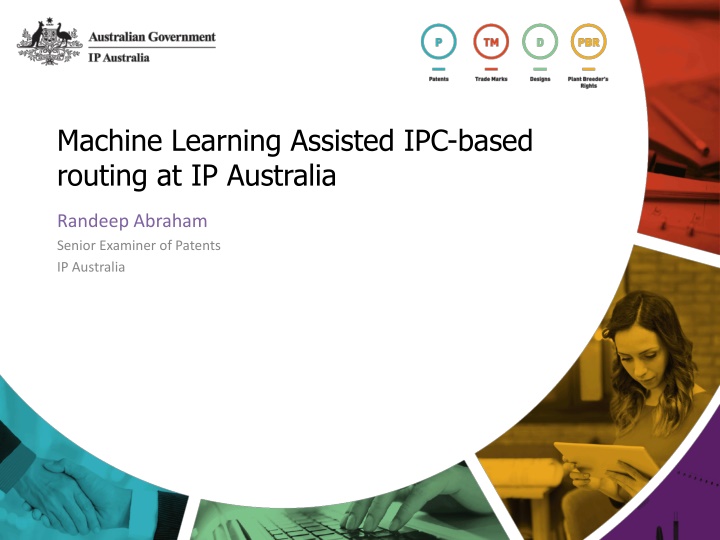
Machine Learning Assisted IPC-based Routing at IP Australia
Explore how IP Australia utilizes machine learning to assist in IPC-based routing for patent examination, enhancing efficiency and accuracy in technology classification. Discover the patent examination structure, past practices, and the innovative technology routing process with the Patent Auto-Classifier (PAC).
Download Presentation

Please find below an Image/Link to download the presentation.
The content on the website is provided AS IS for your information and personal use only. It may not be sold, licensed, or shared on other websites without obtaining consent from the author. If you encounter any issues during the download, it is possible that the publisher has removed the file from their server.
You are allowed to download the files provided on this website for personal or commercial use, subject to the condition that they are used lawfully. All files are the property of their respective owners.
The content on the website is provided AS IS for your information and personal use only. It may not be sold, licensed, or shared on other websites without obtaining consent from the author.
E N D
Presentation Transcript
Machine Learning Assisted IPC-based routing at IP Australia Randeep Abraham Senior Examiner of Patents IP Australia
Examination Work-flow at IP Australia New Technology routing Application Filed Classification Examination Sub-class level classification to select examination section Sub-group level classification in IPC (and CPC if AU original)
IP Australias Patent Examination Structure 14 Examination workgroups Work allocated to each exam group based on IPC sub-class, in rare occasions by main-group or sub-group Example: Medical devices examines A61B,C,D,F,G,H,J,M,N and C12M Example: Bio-technology examines A01H, A01K67, C12N,Q,R,S, C04B20 and G01N33/48-52 and G01N33/566-98
Technology routing Past Practice A small group of examiners allocated an IPC sub-class to all incoming non- national phase applications where required, a main-group or sub-group are also allocated Estimated time spent: average of 2.5 minutes per application with around 11400 cases per year, equating to roughly 64 working days per year
Technology based Routing with our Patent Auto- Classifier PAC (Patent Auto-Classifier) a machine learning based system to perform technology routing of PCT applications by allocating IPC main-group level information PAC is built around a training database of applications from 2010-2019 including: All IP Australia classified national, convention and PCT applications All AU national phase applications with existing IPC symbols from other offices During trial in 2018 PAC had 86% accuracy, following improvements based on feedback Since formal deployment we ve sorted over 1000 applications with PAC - the accuracy now sits over 90%!
Overview of PAC Sits outside existing case-management and other IT systems Uses an integration gateway to connect PAC with examination workflow. Uses a hierarchical training and prediction model - mirroring the IPC structure Always selects the top three results at each level of the hierarchy before traversing to the next level Once a selection of results are available at a particular level of detail, the top three overall results selected
A Simplified Example of the Algorithm Claim being classified: An unmanned aerial vehicle based wireless sensor network using satellite positioning. Required level of detail: IPC Main-group A B C D E F G H B60 B62 B64 G01 G05 G06 H01 H03 H04 B64B B64C B64D G01P G01R G01S H04B H04L H04W B64C27 G01S7 H04W4 B64C29 G01S11 H04W40 B64C39 G01S19 H04W84
Training the Algorithm an overview Symbol Document Terms Each symbol has a cluster of representative documents and each document has a cluster of weighted terms Encryption H04L 1/00 AU Encode 2015236595 H04L 5/00 Terms in a document are weighted based on: Frequency within the same document Inverse-frequency across different documents AU Cipher 2014265895 H04L 7/00 AU Transmission 2017236598 H04L 9/00 Example: Terms like Encryption , Transmission occur frequently within the same document but not across many documents Higher weighting Authentication H04L 12/00 AU 2016325697 Token Example: Terms like Figure , Abstract occur frequently within all documents Lower weighting H04L13/00 AU 2015100156 Secret H04L 15/00
Training the Algorithm looking a bit deeper Each node (symbol) in the IPC is trained with a sample of documents with that particular symbol using an extreme gradient boosting (XGBoost) algorithm Term similarities are measured using pre-trained word embedding over IPA patent documents (using the word2vec algorithm) The combination of term weighting and word embedding is used to measure the distance between patent documents When a new application is classified, each IPC node runs its own customised algorithm to provide a probability score for that application belonging to that node
Future Work Integrate PAC with future examination IT systems using process automation tools Exploring prediction to full IPC Sub-group level Collaborate with other offices on their efforts in AI and ML- assisted classification.
Thank you Randeep Abraham Senior Examiner of Patents IP Australia Randeep.Abraham@ipaustralia.gov.au

